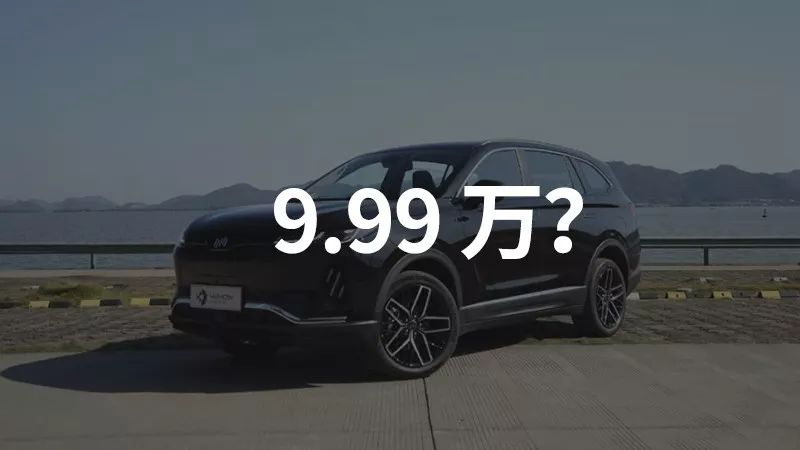In 2019, it was an exceptionally difficult year for every new force in the car industry. Almost all new car makers were trying every possible means to gain brand exposure in order to drive up sales. But WM Motor seemed to be an exception, always appearing particularly low-key.
Although being low-key is not necessarily a bad thing, being too low-key is obviously not a good thing. Even at the end of November, WM Motor released its second car, the WM EX6 Plus, at the Guangzhou Auto Show, but has not yet carried out large-scale market promotion.
However, today, with the launch of WM Direct Purchase mode, WM Motor has finally made a big move, and this move is not targeted at other new car makers, but at gasoline-powered cars.
“WM Direct Purchase” is not just a concept
When explaining and soliciting opinions about the “WM Direct Purchase” program, WM’s Chief Retail Officer, Qi Liren, mentioned several times that “WM Direct Purchase is not just a concept, but a better consumer experience.”
As we all know, the total cost of use was a very important factor why people did not consider electric cars in the past.
For example, my friend bought a BYD Qin EV300 in 2016 for over 160,000 yuan, while at that time, the prices of mainstream compact self-branded cars (gasoline-powered cars) were only around 100,000 yuan. Although he saved a lot on charging and maintenance in recent years, the second-hand price of the BYD Qin EV300 now is about the same as the second-hand prices of those gasoline-powered cars that were priced around 100,000 yuan at that time, or even slightly lower.
Although the subsequent usage cost of pure electric cars is far lower than that of traditional gasoline-powered cars, the high initial purchase cost and poor residual value result in the total cost of use of an electric car over its entire lifecycle being not lower than that of a traditional gasoline-powered car.As early as 2017, NIO created a battery rental program to reduce the entry barrier for electric vehicles and address users’ concerns about battery depletion. However, the “direct purchase mode” of WM Motor is not just a separation of the car and the battery, but rather focuses on the three most important aspects of the entire lifecycle of the product: purchasing, using, and replacing.
We can see that “WM Direct Purchase” involves multiple aspects such as models, financing, charging, and information services. This cannot be accomplished by a single business department, but must leverage various resources and channels within and outside the group.
Based on the Ji Kexing charging and traveling platform, WM Motor Financial, and WM Motor Big Data Analysis, WM Motor targets user pain points and solves the three major pain points of purchasing, using, and replacing new energy vehicles through half-priced purchases, travel contracts, and repurchased value.
Even though the “WM Direct Purchase” mode currently only applies to the WM EX6 Plus 400 Light Enjoyment Edition, WM Motor will comprehensively consider promoting it to all WM Motor products based on future market conditions. Regarding the test drive experience of WM EX6 Plus, you can refer to “My biggest change is in a place you can’t see. WM EX6 Plus is the first national test drive“.
Certainly, after many people read the details of WM’s “direct purchase mode”, they were confused, and some friends in our community also said “it’s all tricks.”
Is WM Direct Purchase a new trick?
To clarify whether it is a trick or not, it is very simple. Let’s do some accounting.From the table, it can be seen that if you choose the half-price purchase option and buy out the battery within 2 years, it will be nearly 11,000 yuan cheaper than directly purchasing the WM EX6 Plus 400 Light Enjoyment Edition.
Moreover, this also includes 1500 kilometers of electricity bills per month within 2 years. Assuming everyone drives around 15,000 kilometers per year and uses 15 degrees of electricity per hundred kilometers while charging at an average public charging station cost of 1.5 yuan per degree, the charging cost for 2 years is about 7,000 yuan.
In other words, the actual cost of choosing the half-price purchase option and buying out the battery within 2 years is only about 170,000 yuan for the WM EX6 Plus 400 Light Enjoyment Edition.
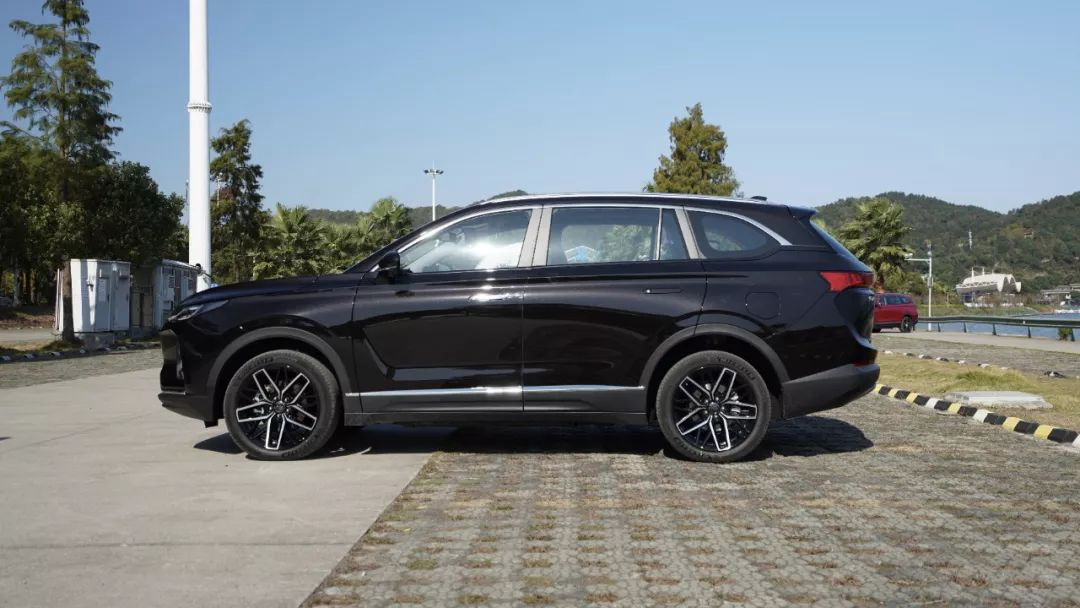
As a mid-level pure electric SUV, this price has basically reached the price range of many compact-level pure electric models. Even in the face of some self-branded mid-size SUVs in the traditional fuel vehicle field, this price does not have a significant disadvantage.
Through the “WM Direct Purchase” model, WM has already brought the entry threshold for electric vehicles to be on par with traditional fuel vehicles. In response to the issue of low resale value of electric vehicles, the “WM Direct Purchase” model also includes a “resale repurchase” plan.
This is not the same as 6 fold.
Many people saw the repurchase plan for the first time and thought that 2 years for 60% off, 4 years for 40% off, and 6 years for 20% off were too low compared to the 75% resale value rate of traditional fuel vehicles in 2 years and the average 50% resale value rate in 6 years.
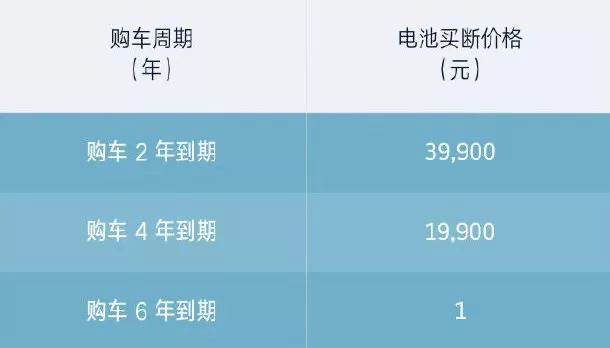
However, WM’s repurchase plan is actually higher than 2 years for 60% off, 4 years for 40% off, and 6 years for 20% off.
Why is this?
Because WM’s “resale repurchase” is calculated based on the half-price purchase of 99,900 yuan, not 189,900 yuan.
Let’s calculate simply.
If you choose the repurchase option after 2 years of use, it is equivalent to a loss of 99,900 – 60% of 189,900 = 39,000 yuan. If calculated based on the full price of 189,900 yuan, the 2-year resale value rate is (189,900 – 39,000) / 189,900 ≈ 79.5%.
If you choose the repurchase option after 6 years of use, it is equivalent to a loss of 99,900 – 20% of 189,900 = 79,000 yuan. The 6-year resale value rate ≈ 58.4%.Translate the Chinese Markdown text below to English Markdown text in a professional manner, retaining the HTML tags inside the Markdown, and only outputting corrected and improved parts without any explanations.
Of course, some people may say that the car usage contract package is not calculated here, so let’s calculate the total usage cost (excluding vehicle insurance costs).

Let’s compare it with Toyota RAV4, which has performed well in the same price range.
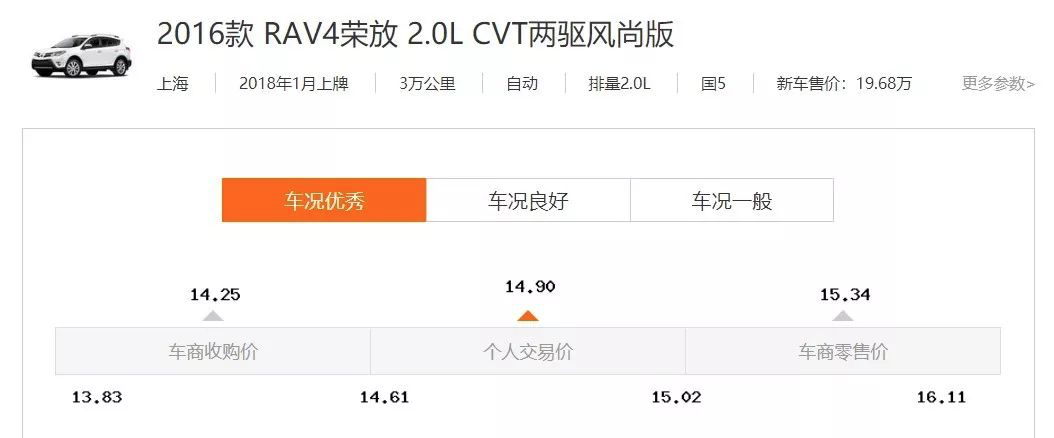
Image source: Auto 300
Toyota RAV4 has a depreciation of about 50,000 yuan in two years, and the cost of fuel and maintenance is about 10,000 yuan per year, so the total usage cost in two years is about 70,000 yuan.
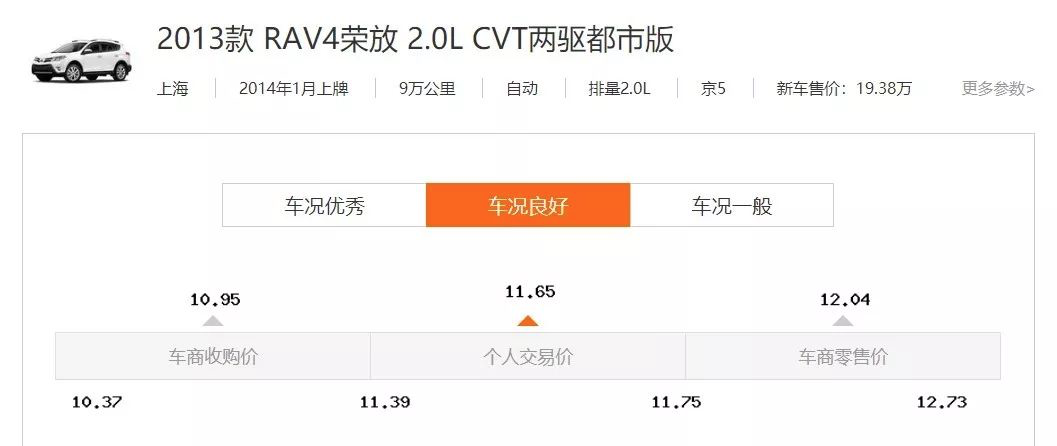
Image source: Auto 300
Toyota RAV4, with a vehicle depreciation of about 85,000 yuan in six years and with an annual mileage of 15,000 kilometers, has a maintenance and fuel cost of about 10,000 yuan per year, so the total usage cost in six years is about 145,000 yuan.
Although the “WmAuto Direct Purchase” program is more expensive than Toyota RAV4 in terms of total usage cost, considering that WmAuto only needs to pay 99,900 yuan initially, the difference in total usage cost between the two is not significant.
However, there is a point that needs attention in WmAuto’s buy-back plan. After choosing the battery buyout plan within 2/4 years of half-price pick-up, because the buy-back plan only applies to bare cars (excluding batteries), the “value-for-money buy-back” will not be enjoyed in the future.
At first, I thought this operation was a bit tricky, but after thinking about it carefully, as a mid-level pure electric SUV, even if it is sold in the second-hand car market, it should not be too difficult with a price of 20,000 after 6 years.
Therefore, overall, the biggest significance of the “value-for-money buy-back” plan is to choose WmAuto EX6 Plus 400 Light Enjoyment Edition which has a half-price pick-up. If you need to sell the vehicle due to dissatisfaction or other issues within a few years, “value-for-money buy-back” can effectively reduce the user’s loss.
How to choose a transportation contract package and battery buyout that is more cost-effective?
Let’s talk about monthly mileage packages first.
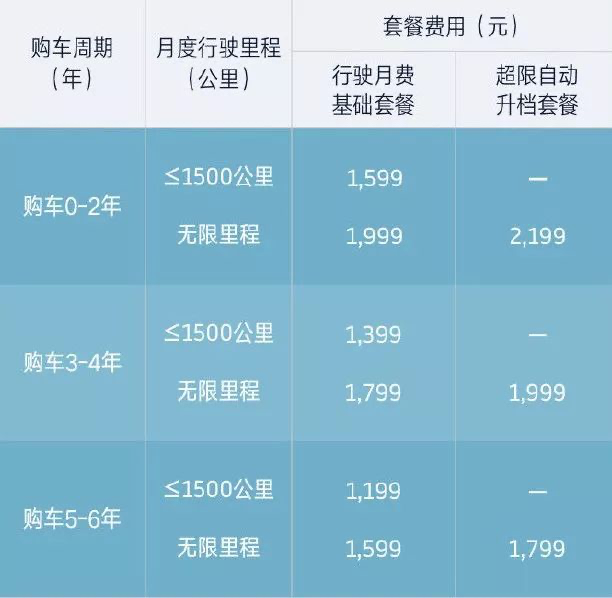
Currently, the package is only divided into two levels, monthly mileage≤1500 km and unlimited mileage package, which are 1,599 yuan and 1,999 yuan in the first year, respectively, and will be reduced by 200 yuan every two years.If your average monthly mileage does not generally exceed 1,500 km, you can always choose the mileage package with a monthly driving distance of ≤1500 km. However, one thing to note is that this monthly mileage is calculated based on the actual mileage of the vehicle. Even if all charging is done through WmAuto JiKeXing or if all charging is done through self-payment (whether at home or at a public charging station), it is still included in the calculation. For example, if your first 1,500 km of the month were charged through JiKeXing, and then you had to start paying for charging (whether at home or at a public charging station), but your total mileage for the month ended up exceeding 1,500km, the package will still automatically upgrade.
Secondly, if you exceed 1,500 km in a given month, you will automatically upgrade to the unlimited mileage package, which is 200 yuan more expensive than directly choosing the unlimited mileage package. Therefore, if you choose the mileage package with a monthly driving distance of ≤1500 km, it is recommended to avoid exceeding 1,500 km as much as possible. Otherwise, you will have to pay an additional 600 yuan in that month, which is very uneconomical.
Of course, if you drive more than 1,500 km per month on average in the long term, it is more economical to directly choose the unlimited mileage package.
Some people might wonder if they can choose the unlimited mileage package for ride-hailing purposes. The answer is definitely no. WmAuto can detect through background algorithms whether there is operating activity, and if it is confirmed that the vehicle is used for ride-hailing, WmAuto can warn or even terminate the contract.
After discussing the issue of monthly rental packages, let’s talk about whether or not you need to choose the battery buyout and which year is more suitable.
Some friends might think that they can just choose to buy out the battery after 2 years, as it is the most cost-effective. However, in fact, it depends on whether you have the ability to charge at home and your average monthly mileage.
-
If you can charge at home, it is recommended to buy out the battery within 2 years. The total cost of buying out within 2 years is 178,176 yuan, but since you can charge at home, the cost of charging later will be very low, which is far more cost-effective than continuing to rent the battery.
-
If you do not have the ability to charge at home and your average monthly mileage exceeds 1,500 km…It is recommended to choose battery buyout within 2 years. This is mainly because the unlimited mileage package is 400 yuan more expensive than the package with a monthly mileage of ≤1500 km. Even when charging at public charging stations, this extra 400 yuan can cover a distance of approximately 1700 km. It is believed that few friends have an average monthly mileage exceeding 3000 km, and this option is more flexible than the travel contract package.
-
For those without home charging conditions and with an average monthly mileage of ≤1500 km
We have calculated the expenses for a person who drives 1250 km monthly and 15000 km annually.
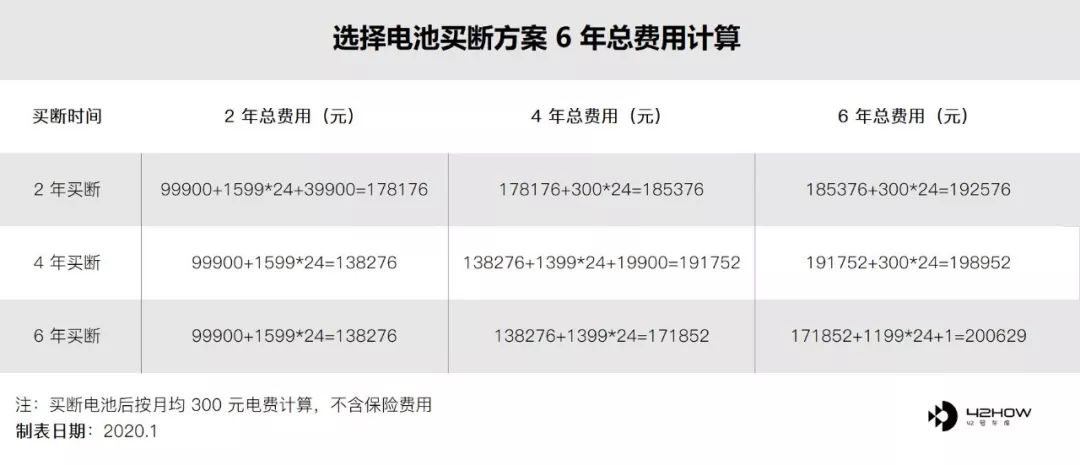
Looking at the total cost for six years, although buying out the battery within two years saves about 8000 yuan compared to the contract package, it still requires a one-time payment of 39,900 yuan. Therefore, overall, everyone can choose to buyout or continue to use the contract package according to their own financial situation.
Finally:
As for “WEYMA Direct Purchase,” whether it is a new retail model or a financial solution, I don’t want to comment too much, but undoubtedly, WmAuto has lowered the threshold for buying electric cars and the entire lifecycle’s usage cost through “WmAuto Direct Purchase.” To use Shen Hui’s words, WmAuto aims to become an advocate for intelligent electric vehicles.
Just as the domestically-produced Model 3 entered the price range of under 300,000 yuan, although it may have an impact on the sales of other brand electric cars in the same price range, the greater significance is that it has greatly increased consumers’ acceptance of electric cars.
Of course, due to price factors, Model 3 is relatively high-end, and its acceptance level will be lower when it enters the more mainstream market within the 200,000 yuan range.
With the appearance of “WEYMA Direct Purchase,” it is believed that other manufacturers will also create similar business models. More and more civilian electric cars will confront fuel cars head-on. Are you ready, fuel cars?
This article is a translation by ChatGPT of a Chinese report from 42HOW. If you have any questions about it, please email bd@42how.com.
